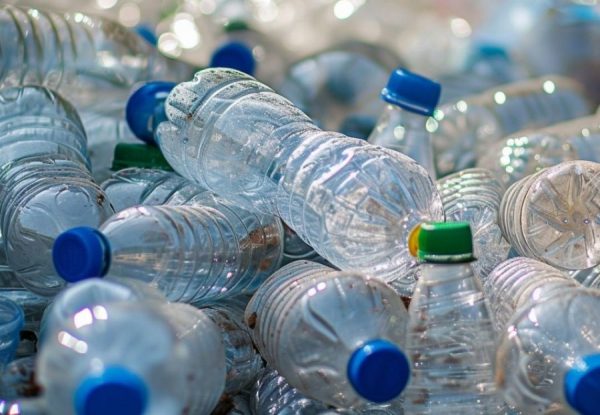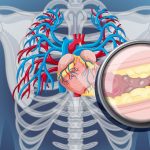We’ve known about microplastics for a while. We hear about how prevalent they are in water and other products sold or stored in plastic bottles, storage containers and wraps.
But they are found in other places, too. They are in your tap water, fish and shellfish, and meat products produced from commercial livestock.
There is pretty much no way to avoid them these days, and that’s a problem.
When you consume products that contain plastic microparticles, those particles are stored in the cells and tissues of your body, including major organs.
The same thing happens when you expose your skin to them. This can happen in any number of ways. Using lotions and other grooming products stored in plastic bottles. Exposure to flame retardant furniture and fabrics. The use of household cleaning products.
These tiny particles just slip in through your skin – the largest organ in your body!
Once microplastics have established a home in your cells and tissues, they begin to wreak havoc on your health.
A groundbreaking study published in The New England Journal of Medicine in February of 2024 linked them to heart attack, stroke and early death. The researchers discovered that people who have microplastics or nanoplastics in their carotid artery tissue were twice as likely to suffer one of these events over the next three years.
We also know that these microparticles act as endocrine disruptors and contribute to estrogen dominance. Additionally, plastic particles are likely seen by your body as “foreign” invaders. This could result in an immediate immune response and trigger inflammatory factors.
Ultimately, these particles could present a long-term source of inflammation and toxic chemical exposure as they accumulate over your lifetime.
So the big question of the day is how to limit your exposure to these harmful plastic particles. Better yet, how to rid your body of them altogether.
Easy Trick Removes Microplastics from You Drinking Water
You can greatly cut your exposure to plastics and plastic particles by refusing to purchase foods and beverages that come in plastic containers or plastic wrap. (This is a great reason to start eating more fresh foods!)
I also recommend ditching all of your plastic storage containers, cups and dinnerware. Plastic blenders, juicers and coffeemakers are risky, too. You are much better off using products made with glass and stainless steel.
As far as drinking water is concerned, you can decrease your ingestion of plastic particles to a fraction of those found in bottled water by making good use of your tap water. But you don’t want to drink it straight out of the tap. After all, tap water still contains some plastic particles; and is notorious for high levels of other toxic chemicals and contaminates.
A February 2024 study suggests that simply boiling water can remove up to 90% of free-floating nano- and microplastic particles from hard water. And in soft water, which contains only about a fifth of the number of microplastics compared to hard water, boiling can remove 25%.
Pouring the water through a coffee filter after boiling can cut plastic particles even further.
You could get similar results by using a water distiller. Just be sure to choose one that has a stainless-steel steam chamber with a glass carafe. After distilling, you can re-mineralize the water with liquid minerals that can be purchased at any health food or supplement store, or online.
There are also any number of filtering and treatment systems (such as carbon filters and reverse osmosis systems) you can use to remove all of harmful compounds from tap water. But you need to take the time to find ones whose key components are not made of plastic.
Sweat Microparticles Out of Your Body
If you want to actually rid your body of microplastics, sauna is probably the easiest way to do it. You basically just sweat out the toxins.
I like the far-infrared saunas because the heat penetrates the skin more deeply than traditional saunas. Instead of heating the air around you, the infrared light basically goes directly into your body.
And there’s a trick you can use to get even more toxins out of your body.
First, scrub your skin and take a cool shower. Then get into the sauna for five or 10 minutes. You’ll come out with sweat all over your skin.
Scrub again, take another shower, then go back into the sauna for another five minutes.
When you are done, give your body a final rinse in a warm shower to cleanse the toxins and oils off your skin, and follow it with a blast of cold water to seal off your pores.
Start off slow. It’s not a good idea to sweat out a ton of toxins all at once. Plus, your body will need to adapt to the heat stress. Gradually build up to 15-minute sections.
I recommend taking a sauna three times a week to reduce your burden of microplastics and other toxins.
And remember! Your body is going to lose a lot of fluid during a sauna. So make sure to drink plenty of water before, during and afterward. You want fresh water coming in and toxin-laden sweat coming out.
While saunas are generally considered safe, be sure to talk to your doctor before starting. Sauna may be contraindicated for certain conditions such as a recent heart attack, lung disease or other serious health concern.
SOURCES:
Lin Q, Pang L, Ngo HH, Guo W, Zhao S, Liu L, Chen L, Li F. Occurrence of microplastics in three types of household cleaning products and their estimated emissions into the aquatic environment. Sci Total Environ. 2023 Dec 1;902:165903.
Marfella R, Prattichizzo F, Sardu C, Fulgenzi G, Graciotti L, Spadoni T, et al. Microplastics and Nanoplastics in Atheromas and Cardiovascular Events. N Engl J Med. 2024 Mar 7;390(10):900-910.
Wright SL, Kelly FJ. Plastic and Human Health: A Micro Issue? Environ Sci Technol. 2017 Jun 20;51(12):6634-6647.
Yu Z, Wang J, Liu L, Li Z, Zeng EY. Drinking Boiled Tap Water Reduces Human Intake of Nanoplastics and Microplastics. Environmental Science & Technology Letters. 2024 Feb;11(3).
Want fewer microplastics in your tap water? Try boiling it first. American Chemical Society. Press Release. 28 February 2024.



